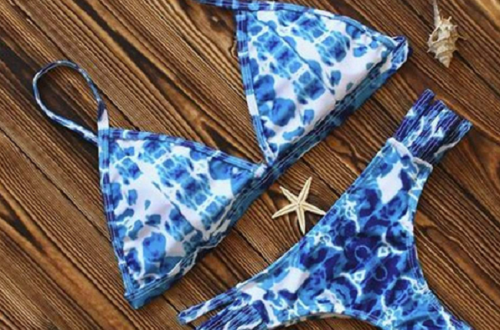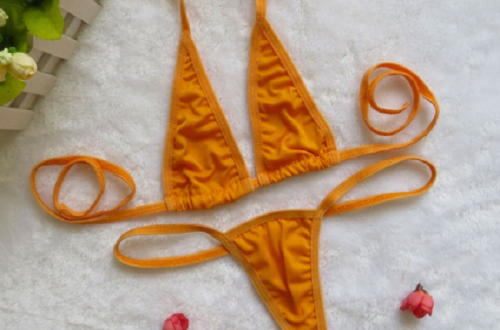Part 1: The Controversial Beginnings of the Bikini
Point 1: The Introduction of the Bikini
The history of the bikini can be traced back to ancient civilizations such as the Roman Empire, where women wore two-piece garments for athletic purposes. However, it was not until the 20th century that the modern bikini as we know it was introduced. French engineer Louis Réard is often credited with creating the first modern bikini in 1946, dubbing it the “bikini” after the Bikini Atoll in the Pacific, where atomic bomb testing was taking place. The bikini was initially met with controversy, as many considered it scandalously revealing and inappropriate.
Point 2: The Bikini vs. Modesty
In the early days of the bikini, it was frowned upon by conservative societies, and even banned in some places. Many believed that the bikini went against traditional notions of modesty and decency. This clash between the revealing nature of the swimwear and societal norms led to a great deal of controversy and debate surrounding the garment. Some viewed it as empowering and liberating, while others saw it as scandalous and indecent. The bikini became a symbol of women’s liberation and independence, challenging societal expectations of how women should dress and behave.

Part 2: The Evolution of the Bikini
Point 1: Fashion and Cultural Shifts
The bikini has undergone a remarkable evolution since its introduction in the mid-20th century. In the 1950s and 1960s, the bikini began to gain mainstream acceptance as a fashionable and acceptable form of swimwear. Initially met with controversy and resistance, the bikini gradually became more widely accepted as cultural attitudes towards women’s bodies and swimwear shifted.
As the bikini’s popularity grew, designers began experimenting with different styles and cuts, catering to a diverse range of body types and preferences. The classic triangle bikini, featuring separate tops and bottoms, remained a popular choice. However, new styles emerged, including halter tops, high-waisted bottoms, and one-piece swimsuits with swimwear-style cuts. These innovations offered women more versatility and customization options, allowing them to choose a style that best suited their individual tastes and preferences.
The bikini’s evolution was also influenced by changing fashion trends. In the 1960s, the bikini became associated with the counterculture movement and the pursuit of freedom and individuality. Bold prints, bright colors, and playful designs were popular. In subsequent decades, the bikini continued to evolve, reflecting the changing tastes and preferences of each era. From the minimalist styles of the 1990s to the high-waisted trends of the 2010s, the bikini has remained a versatile and adaptable garment that has captured the imagination of women around the world.
Point 2: Empowerment Through Choice
The bikini has undergone a remarkable evolution since its introduction in the mid-20th century. Initially met with controversy and resistance, the bikini has since become a symbol of freedom, choice, and body positivity. The increasing variety of styles and designs has empowered women to embrace their bodies and feel confident in their skin.

The bikini has challenged traditional notions of female beauty and has allowed women to redefine their own standards of attractiveness. By embracing the bikini, women have asserted their right to choose how they want to present themselves to the world. The bikini has become a symbol of empowerment, representing a woman’s choice to be comfortable and confident in her own body.
The availability of diverse bikini styles has further contributed to the swimwear’s empowering message. From classic triangle tops to modern high-waisted bottoms, there is a bikini style to suit every body shape and personal preference. This variety allows women to find a design that makes them feel beautiful and confident. By embracing the bikini, women can express their individuality and celebrate their unique bodies without fear of judgment.
The bikini has become a powerful tool for promoting body positivity and self-acceptance. By challenging traditional beauty standards and embracing a diverse range of styles, the bikini has helped to create a more inclusive and accepting society. The bikini is not just a piece of swimwear; it is a symbol of empowerment, choice, and self-love.
Part 3: The Bikini as a Tool of Empowerment
Point 1: Challenging Beauty Standards
The bikini has become a powerful tool in challenging traditional beauty standards and promoting inclusivity and body positivity. Through its representation of a diverse range of body types and shapes, the bikini has emerged as a symbol of inclusivity, breaking away from the notion that only a certain type of body is universally deemed acceptable or beautiful. This shift has had a profound impact on social media and marketing campaigns, where women of all shapes, sizes, and backgrounds are being represented in bikinis, effectively challenging the narrow and unrealistic beauty ideals of the past.

By showcasing a wide variety of body types in bikinis, these platforms have helped to challenge and redefine the notion of beauty. They promote the idea that beauty comes in all forms. This representation has helped to validate and celebrate the unique beauty found across different individuals. This is irrespective of their size, shape, or physical characteristics. This crucial shift in representation has fostered a culture of inclusivity and acceptance. It significantly challenges the stereotypes and prejudices associated with body image.
Moreover, the swimwear has become a platform for celebrating diversity and promoting body positivity, emphasizing that all bodies are beautiful. This new narrative has contributed to empowering individuals to embrace their bodies and feel comfortable in their own skin, nurturing a culture of self-love and acceptance.
Point 2: Embracing Confidence and Self-Expression
The act of wearing a bikini has evolved into an empowering statement for numerous women. It provides them with a profound sense of confidence and self-expression. When women choose to wear a bikini, they are not just making a fashion choice. They are also embracing their bodies and celebrating their individuality. The bikini serves as a canvas for women to feel comfortable in their skin and express their personal style. This could be through bold prints, vibrant colors, or unique designs.
The empowerment derived from wearing a bikini has been instrumental in transforming the way women perceive and embrace their bodies. It fosters a culture of self-love and acceptance. It signifies a rejection of societal pressures and unrealistic standards. The act of wearing a bikini holds the power to instill a sense of empowerment and autonomy. It allows women to reclaim ownership of their bodies and embrace their unique beauty without conforming to external expectations.
Embracing one’s body through a bikini is a profound act of self-acceptance and self-love, as it celebrates individuality and promotes a positive body image. It signifies a shift towards confidence and empowerment, encouraging women to recognize and appreciate their natural attributes. This cultural shift has contributed to reshaping the narrative surrounding body image and beauty standards, as women assert their right to feel comfortable, confident, and empowered in their own bodies.

Part 4: The Bikini in Pop Culture and Media
Point 1: Women’s Empowerment in Media
The portrayal of women in bikinis in popular culture and media has significantly impacted the perception of beauty and body image. Through movies, television shows, and advertising campaigns, the bikini has emerged as a symbol of empowerment. It represents women’s strength, independence, and self-confidence. By showcasing women of diverse body types and backgrounds wearing bikinis, mainstream media has contributed to normalizing and celebrating various forms of beauty. This moves away from the narrow and unrealistic beauty standards that were once prevalent.
This visibility of women in bikinis has helped diverse body types gain recognition and acceptance. It promotes a more inclusive and positive image of beauty. Rather than promoting a single, exclusive standard, the depiction of women in bikinis across different platforms has allowed for a more extensive representation of body types. It empowers women to feel validated and confident in their own skin.
Furthermore, the portrayal of women in bikinis as symbols of strength and independence challenges traditional societal expectations. It presents women not as objects for the male gaze but as individuals in charge of their own identity. This shift in representation encourages women to embrace their bodies, feel empowered, and assert their own sense of beauty and confidence.

Point 2: Impact on Feminism and Gender Equality
The bikini has also been associated with feminist movements and advocacy for gender equality. Women have used the swimwear as a form of protest and expression, reclaiming ownership of their bodies and challenging the male gaze. Activists have organized bikini marches and demonstrations to advocate for women’s rights and highlight issues of objectification and sexualization. The bikini has become a symbol of female empowerment, representing the ongoing struggle for gender equality and women’s rights.
In conclusion, the swimwear has transitioned from a controversial and scandalous garment to a symbol of empowerment and self-expression. Its evolution reflects changing attitudes towards beauty, femininity, and cultural norms. By embracing diverse body shapes and promoting inclusivity, the swimwear has become a powerful tool for promoting self-confidence, body positivity, and women’s empowerment. Its portrayal in media and pop culture has contributed to a more inclusive and positive representation of women. This challenges traditional gender roles and beauty standards. The swimwear continues to inspire women to embrace their bodies and assert their identity. It promotes a culture of empowerment and self-acceptance.




